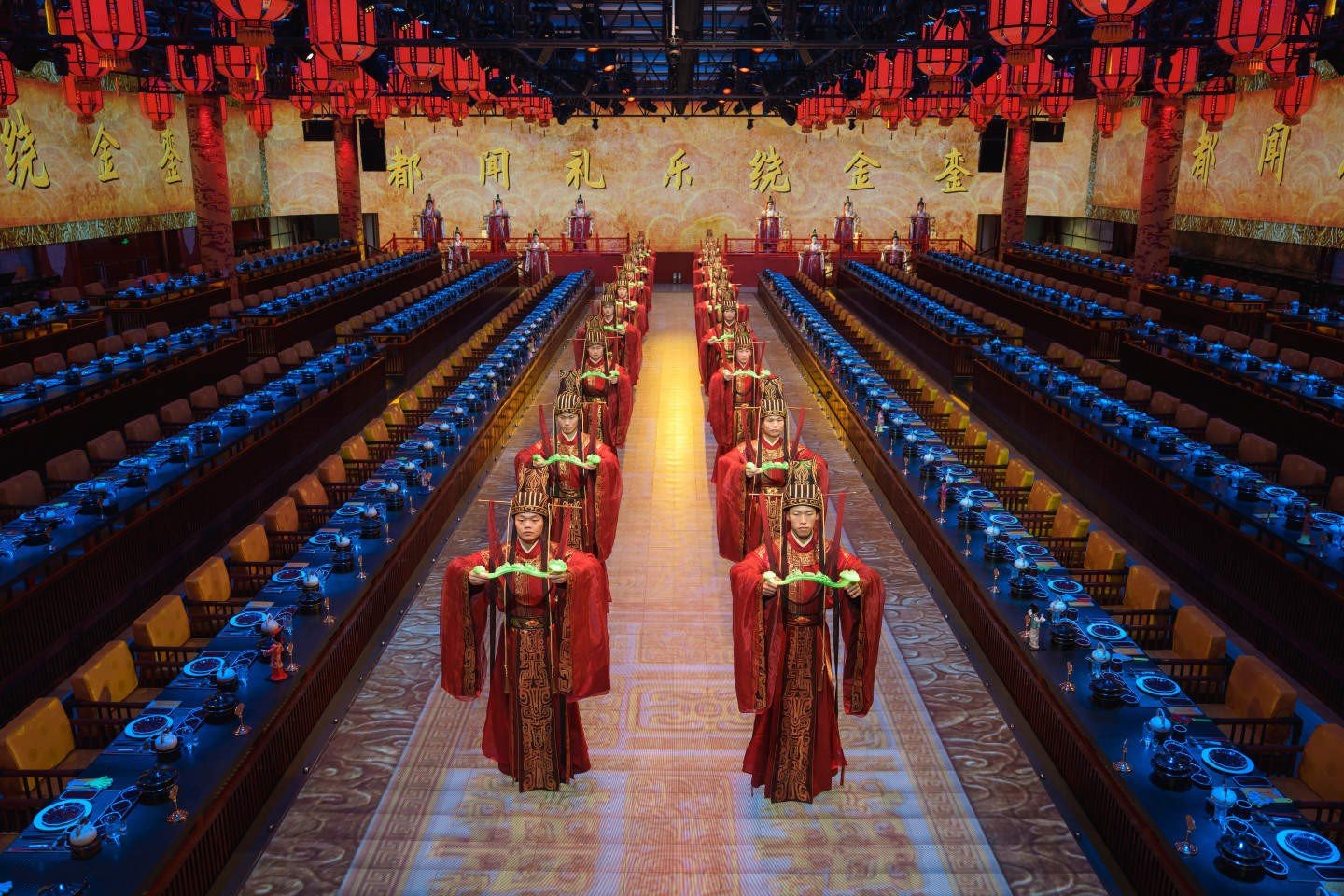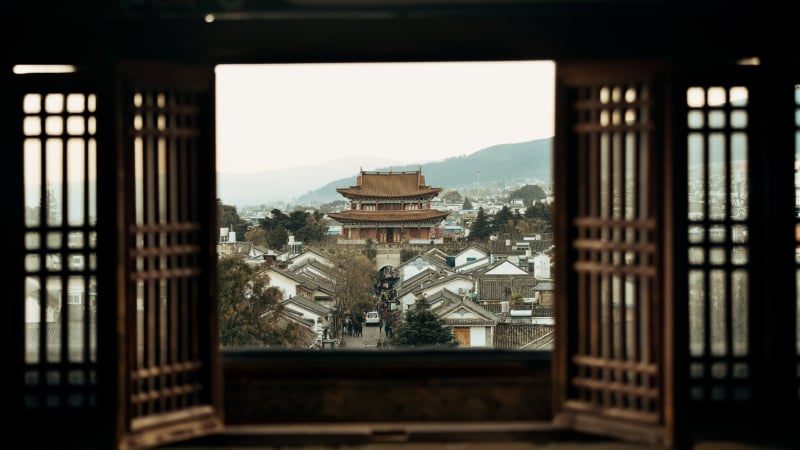In the heart of Beijing, the thousand-year-old capital of China, where the past and present intersect, there is a special place that takes visitors back to the golden age of feudal dynasties: Yuxiandu Restaurant. This place is not only a culinary restaurant but also a “living museum”, a “gate” opening to the world of the ancient royal court, where cuisine, art and culture blend to create a unique experience, appealing to all the senses of visitors.
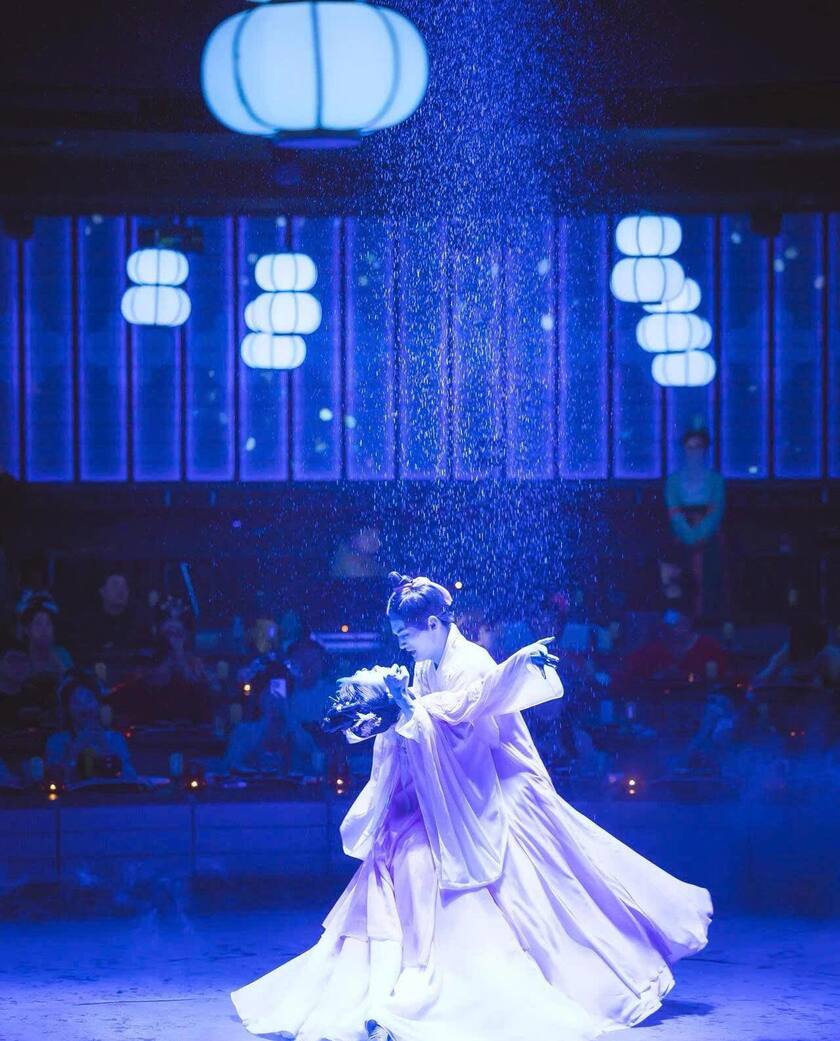
Ngu Tien Do has succeeded in vividly recreating the royal banquet space, where every detail is meticulously cared for, from architecture, interior to each service ritual. The birth of this restaurant not only has commercial significance but also has profound cultural value, demonstrating Beijing's efforts in preserving and promoting the quintessence of traditional Chinese culture.
Royal Space - Step into a fairy tale
From the first moment you step through the main gate of Ngu Tien Do, visitors will be immediately overwhelmed and captivated by the magnificent space, as if entering a real palace. The restaurant's architecture is designed in the style of the Ming - Qing Dynasty palace, with curved roofs, pillars carved with elaborate dragon and phoenix shapes, and rows of sparkling red lanterns hanging high. The shiny brick floor and the gilded tables and chairs further highlight the luxury and splendor of the space.

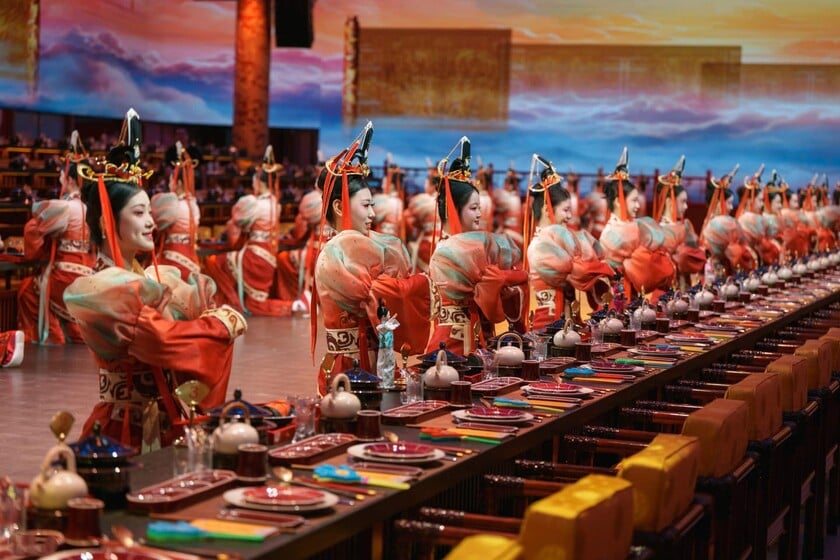
The special feature that makes Ngu Tien Do different is the service staff. They wear royal costumes, bow according to royal court etiquette, taking diners back in time to an ancient dynasty. Every smallest detail in the restaurant, from the wall patterns, the dragon and phoenix carved screens, to the sophisticated blue and white porcelain dishes, are all meticulously recreated, showing the solemnity and sophistication of the royal family. This gives visitors the feeling that they are truly attending a royal banquet.


Party rituals and the intersection of cuisine and art
The experience at Ngu Tien Do is not simply about enjoying the food. It begins with an elaborate entrance ceremony. Guests are invited to dress in splendid royal costumes, originally reserved for the aristocracy of old. Upon entering the banquet hall, each guest is greeted as a prince or princess.

The royal court music with the melodious drums and flutes resounds, creating a solemn and sacred atmosphere. This ritual not only helps visitors immerse themselves in their roles but also opens up a culinary journey associated with culture, turning each dish into a part of the historical story.
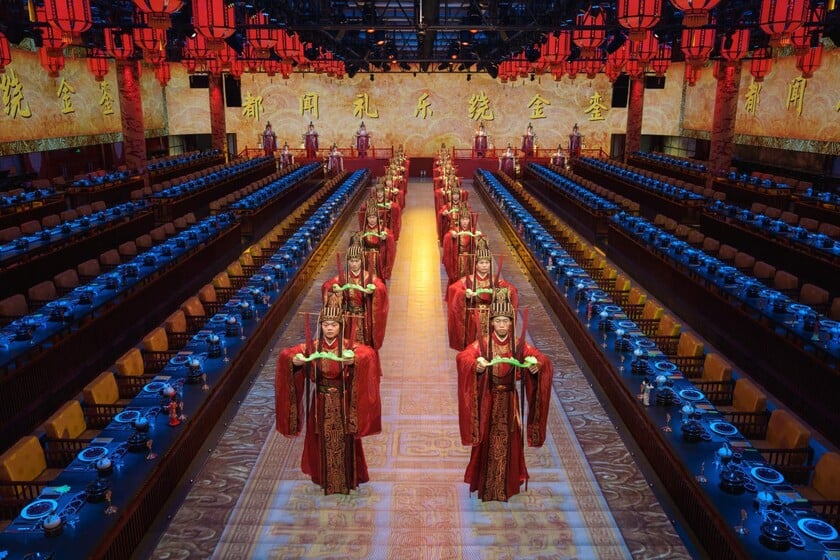

At Ngu Tien Do, each dish is not only a taste experience but also a historical story that is delicately recreated. Diners will discover Buddha Jumps Over the Wall - a premium dish with more than 30 precious ingredients, simmered for many hours to create a deep flavor. Once a "treasure" on the royal banquet table, this dish represents the ultimate luxury and quintessence of Chinese cuisine.
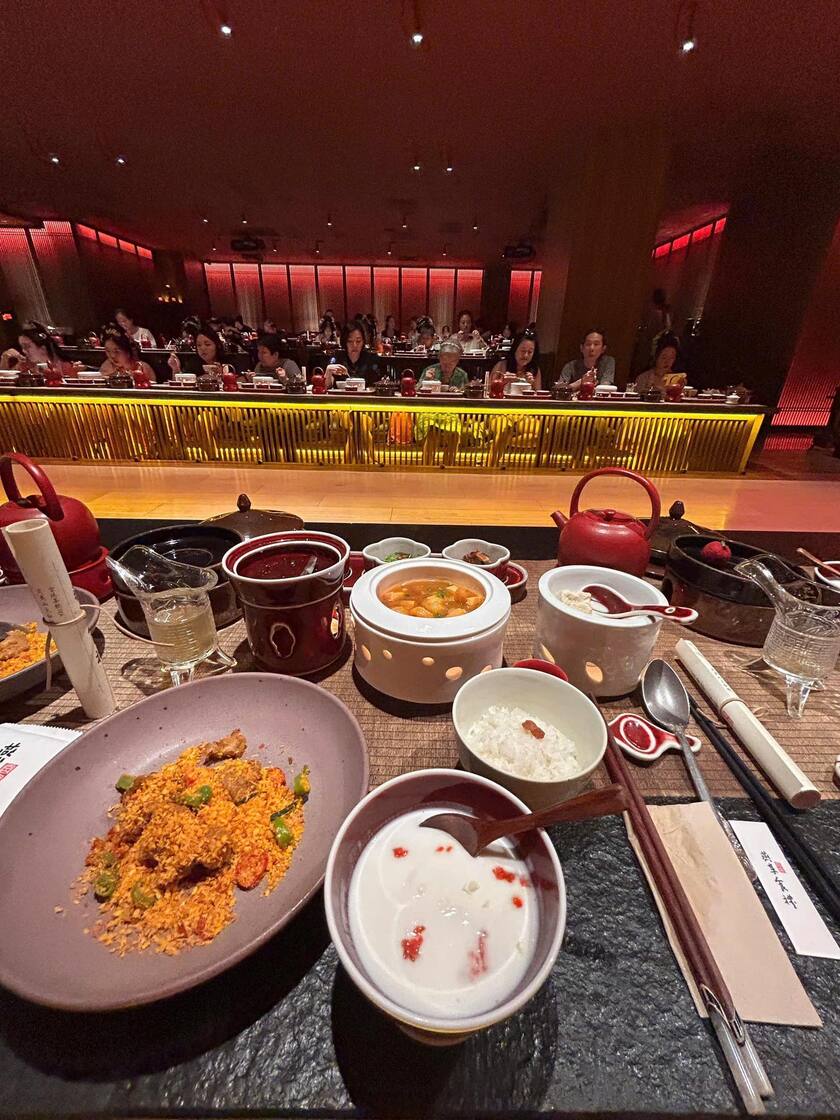
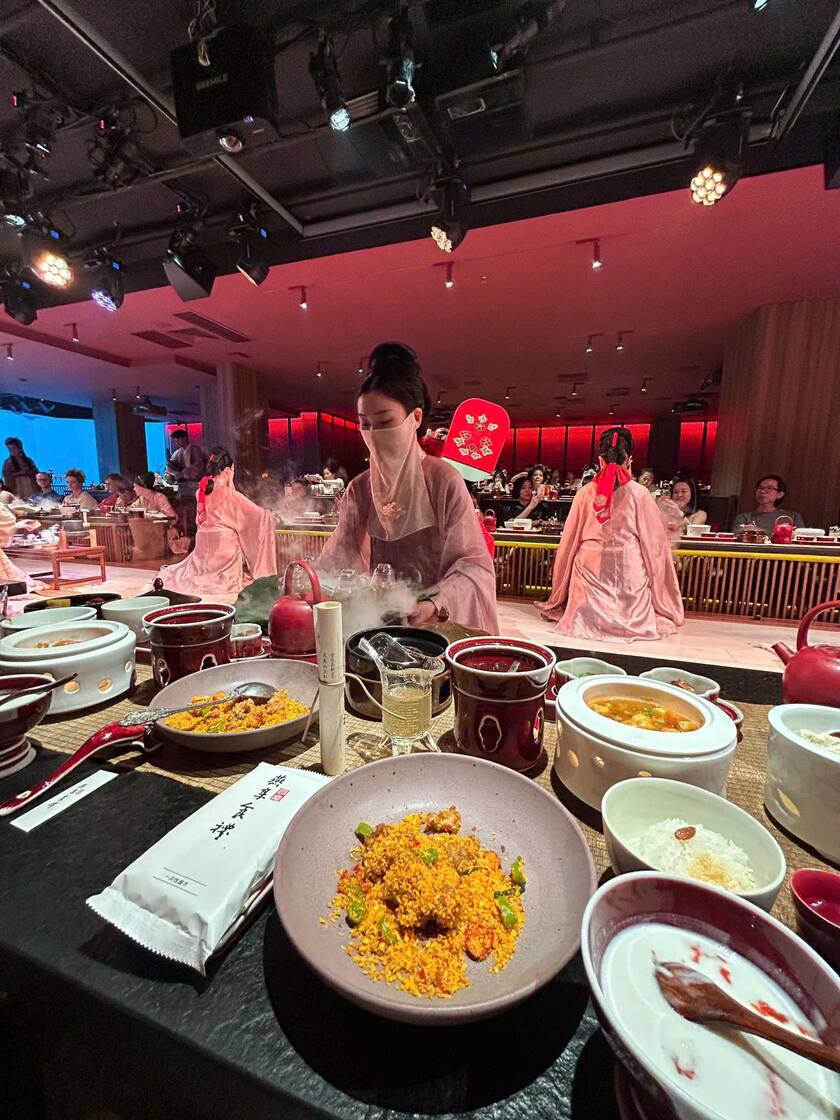
Next is the Imperial Roast Duck, a sophisticated variation of Peking Duck with crispy skin and tender meat, served in a traditional manner. Finally, the Chrysanthemum Fish Balls are not only delicious but also beautiful in appearance, symbolizing elegance and longevity. Each dish is associated with a historical story, recreating the eating style of emperors, turning the culinary journey into a meaningful cultural exploration.
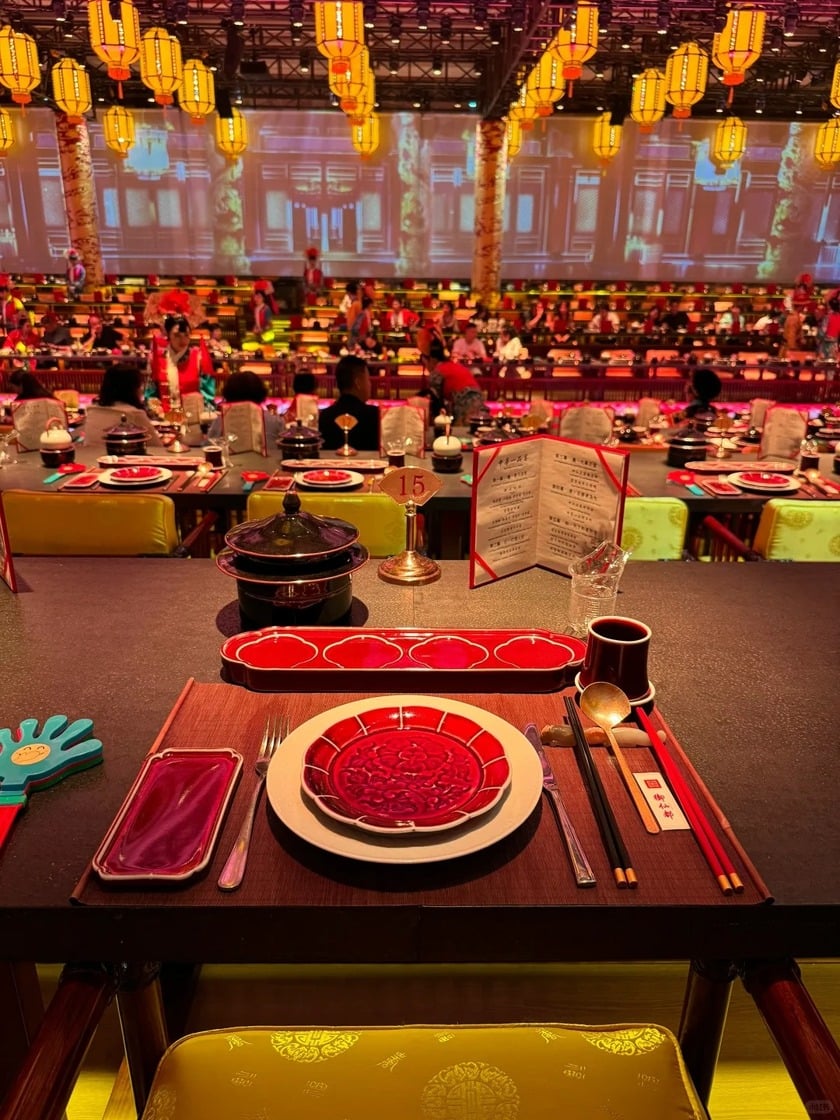
The banquet at Ngu Tien Do is not only about cuisine but also a multi-sensory art performance. Interspersed among the dishes are unique royal art performances, such as ancient dances, traditional musical instruments (pipa, bamboo flute), or war drums. In particular, there are reenactments of tea offering ceremonies, palace maid dances, or dragon and phoenix dances, giving visitors a vivid visual and auditory experience.
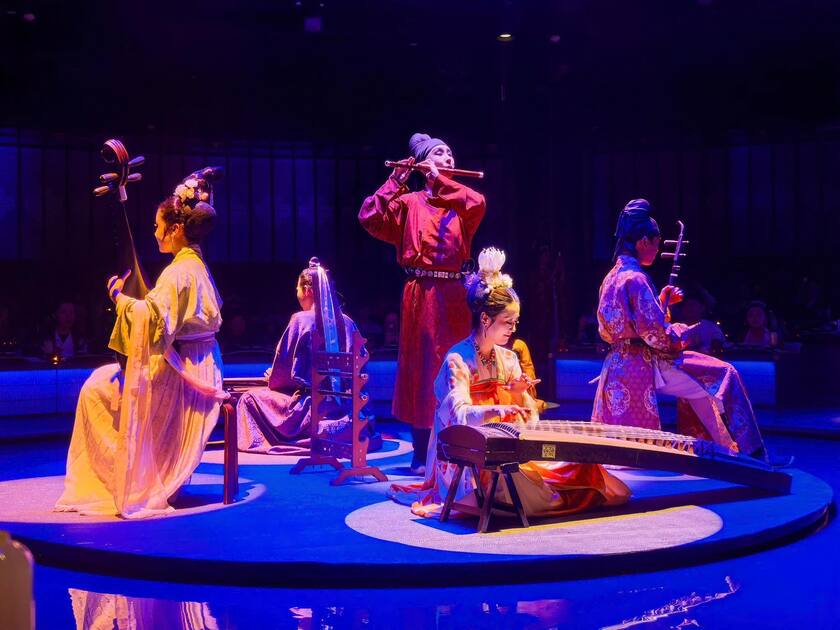
The restaurant also has a small museum area, which displays replicas of cultural relics, costumes and utensils from the Qing Dynasty palace. This allows visitors to not only enjoy delicious dishes but also learn more about the history and culture of the royal court. In addition, the ancient costume dressing service is also a special highlight, helping visitors transform into royal characters and capture memorable moments.
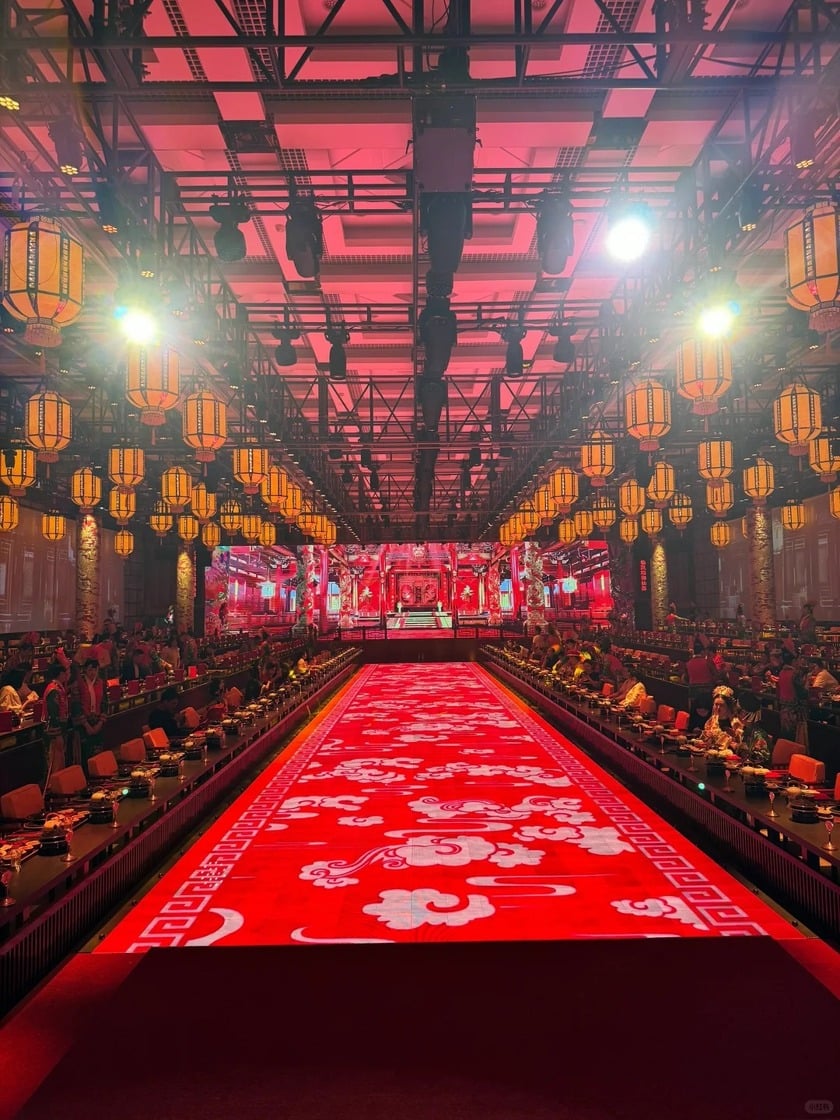

Ngu Tien Do is a testament to the creativity in combining tradition and modernity. By applying light and sound technology to create realistic and vivid effects, the restaurant has succeeded in making cultural heritage more familiar and attractive to the younger generation. This place not only attracts local people but is also an attractive destination for international tourists, especially those who love Chinese culture.
Through its cuisine, art and architecture, Ngu Tien Do connects visitors to history, helping them better understand the royal spirit and appreciate the values left by the ancients. This is also a way for China to assert its soft power on the international stage: using culture to create impression and attraction.





